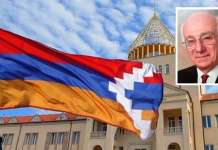During his last State of the Union address, President Barack Obama announced that another war had been avoided, referring to the Iran nuclear deal which began dismantling the sanctions imposed on Iran in return for the latter getting rid of its nuclear weapons. The historic accord was signed on July 14, 2015 in Vienna between six leading powers and Iran, and it took effect on Saturday, January 16, after the International Atomic Energy Agency (IAEA) certified Iran’s compliance with the agreement regarding the country’s nuclear program and the Joint Comprehensive Plan of Action (JCPOA).
Thus the sanctions regime imposed on Iran by the United States has been substantially weakened.
The sanctions had been imposed by a presidential decree and by congressional action dating back to 1979, and later expanded in 1995. The first set can be lifted by the president but the latter will need congressional action, which may hit some hurdles down the road depending on any change in the configuration of the next congress.
There was certainly jubilation in Iran as well as a sigh of relief in the entire region, but some tough talk on the US presidential campaign trail. Prime Minister Benjamin Netanyahu, who had secured billions of dollars of additional US aid to Israel and had managed to divide the Israeli lobby in America, acquiesced only grudgingly to the fact. He continued to state that “Iran has not given up its nuclear ambitions” and that he would keep watching its actions closely. On the presidential campaign trail, Republican candidate Ted Cruz vowed to throw out the Iran nuclear deal on the first day he is in office, with his eyes focused on Netanyahu, rather than the US electorate.
President Obama was able to achieve the Iran deal against all odds, like the Cuban rapprochement, because he was able to read the war weariness of the public after the waste of trillions of dollars of US taxpayers’ money and the precious blood of our youth in uniform. That war weariness was signaled in the successive defeats of the campaigns of John McCain and Mitt Romney, for whom a strong defense was a euphemism for entering yet another war, all under the guise of patriotism, while directing taxpayer money to the military industrial complex.
No nation in the world can match nor challenge American military supremacy in the foreseeable future. That is why Britain’s opposition Labor leader Jeremy Corbyn is advocating the decommission of the UK’s nuclear submarines, symbols of the waste of taxpayers’ money.
Iran was on the military radar of the Bush-Cheney administration along with Iraq, Syria and Libya, which are enjoying the fruits of “democracy building” in their respective bloodbaths.
Despite the demonization of the Tehran regime, the mullahs proved that they were competent to play the game of diplomacy and get their country out of political isolation.
The proven venue of diplomacy may also lead to a settlement of the Syrian nightmare, in which Tehran is a major player.
Incidentally, the West used and deepened the religious fault lines in the Middle East in order to fragment and pulverize several Arab countries. Despite the fact that those fault lines have historically existed, they exploded only in recent decades, which served interests other than those nations and led to a new profile of the region. However, ironically, the unintended consequence of the “divide and conquer” policy is that Iran became its major beneficiary, mobilizing the Islamic world within the Sunni-Shia divide.
At this time, Tehran enjoys great influence in Iraq, Lebanon, Bahrain, Yemen (Shiite Houthis) and among the Shiites of Kuwait. In Syria, Iran supports the Alewis, a Shiite branch. There are more than 4 million Shiites in Saudi Arabia, living right by the Saudi oil wells. Thus, Iran dominates the “Shiite crescent” in the region, opposed by Saudi Arabia, Turkey and Israel, at best odd bedfellows.
Iran has the eighth largest army in the world, with a population of 80 million and growing at the rate of one million a year.
The International Monetary Fund estimated that Iran’s GDP for the year has been $393.5 billion, a growth of 1 percent despite the sanctions. The forecast is that it will rise to 4.5-5 percent during 2016-2017.
As a result of lifting the sanctions, $100 billion of frozen assets will be freed to boost its economy. With the lifting of the sanctions regime, Iran will pump 500,000 more barrels of oil daily to boost the total to 2 million barrels.
Tehran assures the members of OPEC that the additional pumping will not impact the oil market any further, since the major buyer will be China, which was already trading with Iran, despite the sanctions.
Armenia is the only country which has had stable friendly relations with Iran, and thus it is in a position to participate in all the positive ways which will link Iran to the world. In fact, it can act as a bridge between Iran and Europe.
“We welcome the start of the implementation of the agreement on Iran’s nuclear program and the lifting of sanctions against Iran,” said Armenia’s Foreign Minister Eduard Nalbandian this week.
The Tehran government has already signaled that it is ready to further develop economic relations with Yerevan.
During a visit last October to Armenia, Iran’s First Vice President Eshaq Jahangiri discussed projects with Armenian leaders, telling them that the Iranian side is ready to boost Armenian-Iranian relations, “without limitations.”
Besides the economic development between the two countries, Armenia will benefit from the reconfiguration of geopolitical realignments in the region.
In the first place, Iran is offering cheaper gas to Georgia. Should an agreement be reached between the two countries, the pipelines will run through Armenia. Also, because of economic necessity, Tbilisi has been siding with Baku, the source of its gas, thus becoming the third member of the blockade imposed by Turkey and Azerbaijan. That blockade will be loosened if Georgia’s interests are better served with Iran. Azerbaijan, whose currency, the manat, has suffered a dramatic drop recently, will further lose on the gas market with Iran’s emergence as a major power in the region. And finally, Iran’s perennial adversary, Turkey, will further lose ground in the region in addition to its confrontation with Russia.
Last August, Iran and Armenia reached a final agreement on the construction of a new power transmission line which will boost the export of Armenian electricity to Iran, and which in turn will pay for the electricity with natural gas delivered through a pipeline which is used under capacity. Energy Minister Yervand Zakharyan has announced that with the unfreezing of the assets, Iran will be able to finance the construction of the hydroelectric plant on the Arax River. The $350-million project had been shelved because of a lack of funds earlier.
Armenia is dependent for its gas supply on GazProm of Russia. Now, with the availability of a larger Iranian gas market, Yerevan is able to bargain a lower rate with Russia.
Thus far, Armenia’s exports to Iran have been limited because of the Eurasian Economic Union’s high tariffs, which need to negotiate between EEU members and Tehran to lower them to boost exports.
A North-South highway linking the Gulf countries to Europe has a better chance of being constructed through Armenia. That will also contribute to the rise of the tourism industry in the country.
Iran’s political and economic emancipation is a bonanza to its neighboring countries. It remains for Yerevan to take advantage of this unique development to improve its economy, to stabilize the country and provide reason and hope to the population not to emigrate.
Political developments work in a fluid realm; they may change course any time for any reason. We have to sail with the favorable trade winds as long as they last.















